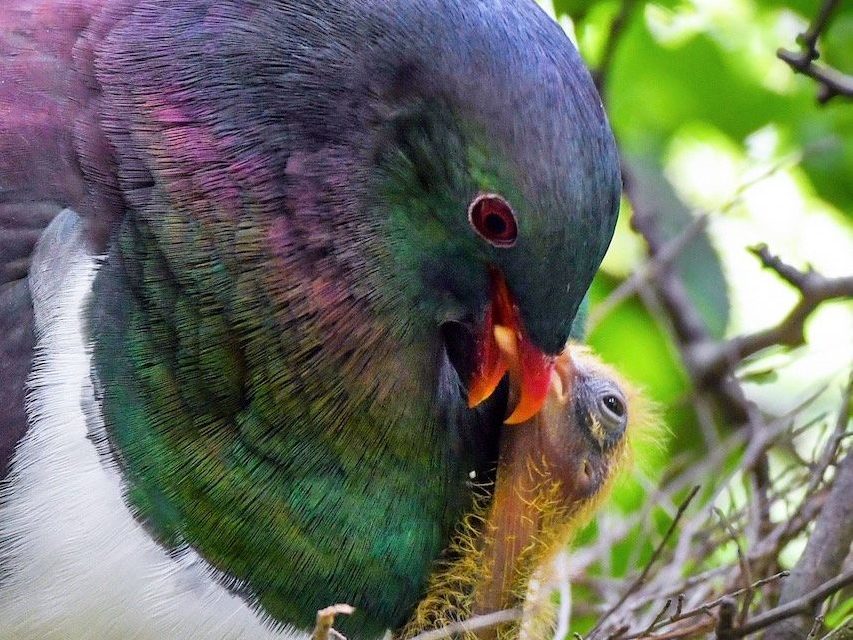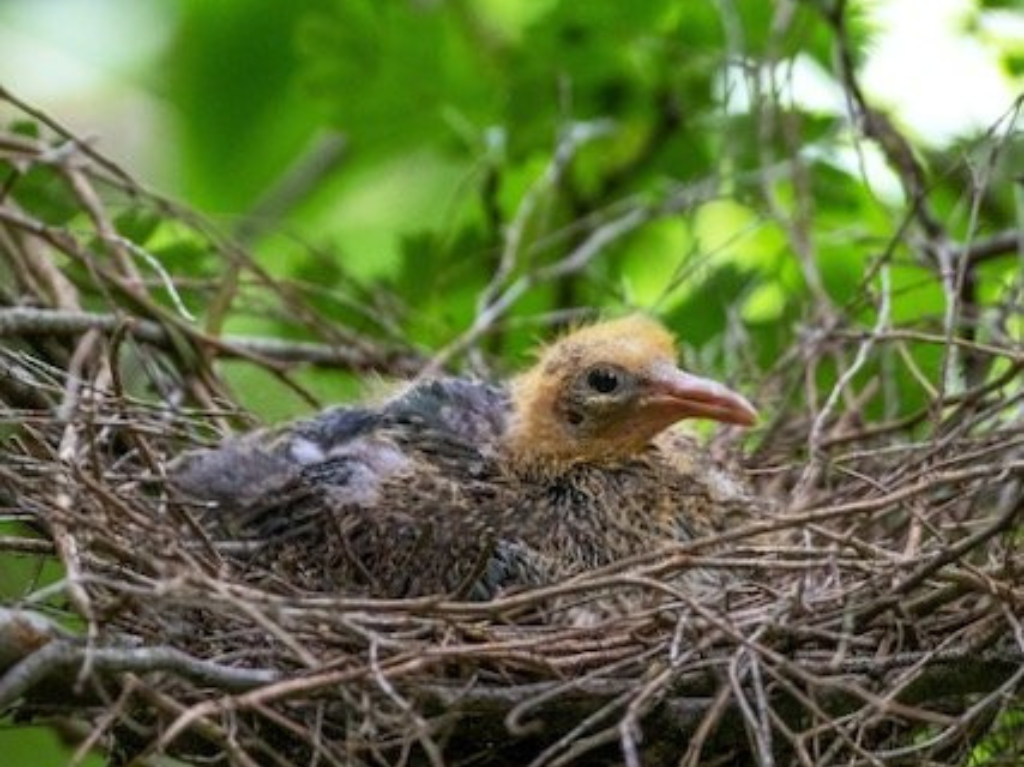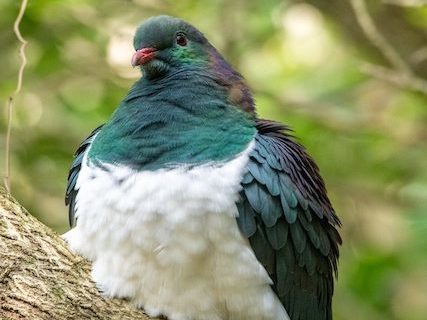Before Lucky the kererū chick – there was no luck. On our tiny bush remnant, I watched as Lucky’s parents endured six successive nest fails this season. Each time, a predator ate their single egg. Judging by the eggshell remains, we think the main culprits were ship rats. I’m Rod Morris, and this is Lucky’s story.

Lucky lives in my backyard on the Otago Peninsula. Well over 20,000 possums have been removed from the peninsula by the incredible work of the Otago Peninsula Biodiversity Group.
Possum reduction has undoubtedly helped kererū in our neighbourhood, but despite this, Lucky’s life has been anything but easy.
With all the talk of predator control, sometimes we can lose track of the native species we are trying to protect. Introduced predators devastate our vulnerable species, especially our young taonga.
Day 1 – just a wiggle
8.15 am – Watching a kererū nest is like watching paint dry. Kererū sit extremely ‘tight’ on the nest (just a jumble of sticks), and the chick is seldom seen.
But after 30 days of incubation and checking the nest every day, I saw a wiggle this morning. A kererū chick has finally hatched and possibly made history: perhaps the first kererū chick to hatch on our patch in the 20 years we’ve been trapping.
Day 10 – diligent parents
11.37 am – It’s tough work being a kererū parent.
Mama kererū has no breaks as she sits for 15 – 16 hours through the night, and well into the following day.
Late mid-morning Dad takes over for the remaining 8 – 9 hours.
Dad arrives this morning with a large feed of ‘pigeon milk’, a porridge-y secretion from the parent’s throat. On an ‘all sleep and no exercise diet’, Lucky is growing quickly.

Day 36 – possum attack
8.11 am – Lucky’s nest is located in a hawthorn tree brimming with ripe red fruit, a much-favoured snack by night-visiting possums. We have kept up trapping around the nest. So far, a possum has been trapped in the vicinity of the nest once every 12 days on average.
But this morning was different. I came across a hefty female possum caught right below the nest for the first time. Mama kererū also acquired a severe scar across her face overnight.
Mama doesn’t stay on the nest overnight anymore. Perhaps she’s nervous after the suspected possum attack. Now, Lucky sleeps alone.
Day 50 – first flyer

7.48 am – A chick’s first flight is a dangerous time in their life. That’s when kererū youngsters are at risk if they end up on the ground – vulnerable to predators.
So when Mama kererū turned up for feeding time, she was just as concerned as I was that Lucky wasn’t in the nest.
After several anxious minutes of Mama hopping from branch to branch, she began cooing quietly. The next minute, Lucky came flying strongly through the understorey – landing neatly beside Mama for a feed.
Day 243 – almost all grown up
2.17 pm – We are starting to think Lucky is a girl. Today, a young male attempted courtship with Lucky – puffing his chest and bouncing. She didn’t seem entirely sold.
Lucky is almost all grown up. Now, even in strong winds, Lucky glides confidently across the neighbourhood. But she still hangs out with her Dad sometimes.
Lucky’s parents are trying to renest, but they’ve had no luck so far. Two more failures seem to be due to predator attacks.

The Luckys and not-so-Luckys across NZ
Across our country, manu (birds) are nesting and re-nesting as predators eat their eggs. There are things we can do to make life easier for our manu as they try to start families.
- Trap possums and rats that predate manu and their chicks.
- Plant natives that provide food, shelter and nesting materials for manu.
- Keep pet cats inside as much as possible.

